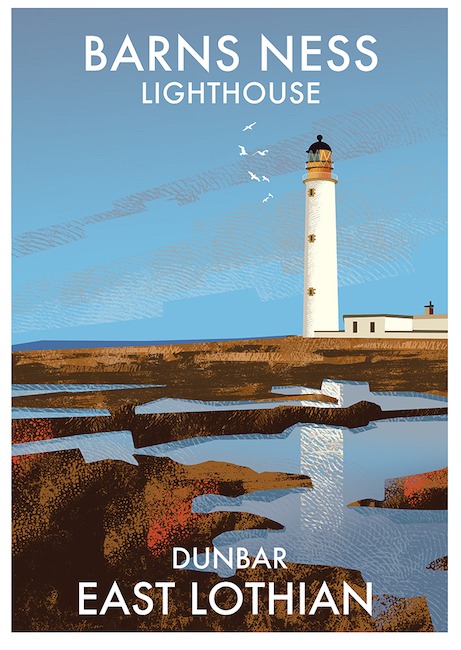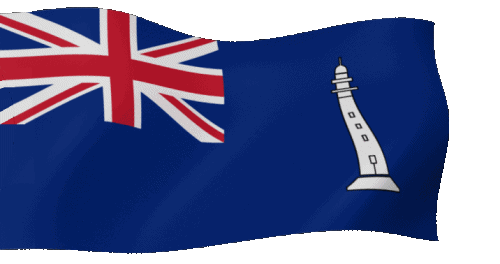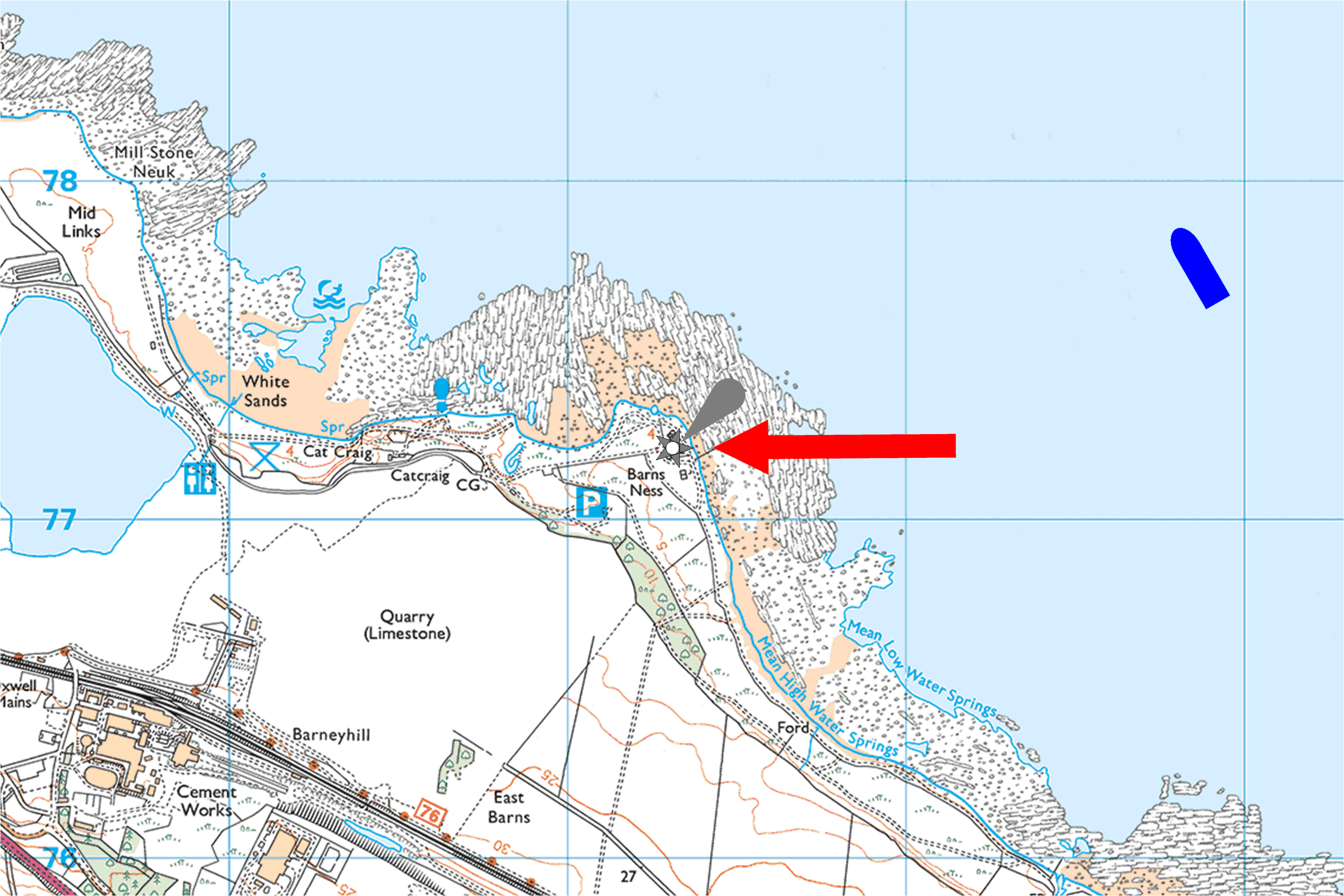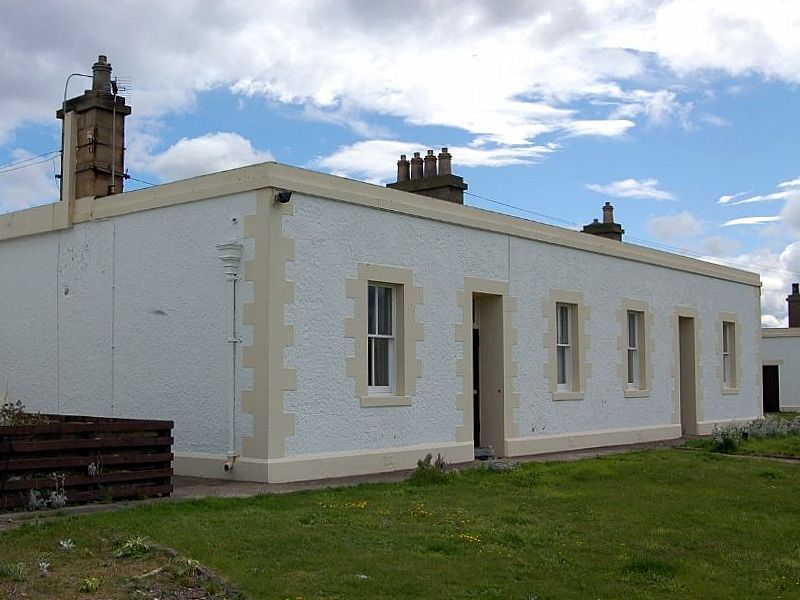
The Barn Ness Lighthouse is located 5 km southwest from Dunbar. This lighthouse marks the southern entrance to the Firth of Forth and Edinburgh. The lighthouse is on low rocky ground, close to the sea.
The commissioner for the construction of the lighthouse was the Northern Lighthouse Board in Edinburgh. The reason for the construction of this lighthouse is not known to me. (if someone has information, let me know). The Lighthouse at Barns Ness was built by David Alan Stevenson, Engineer of the Northern Lighthouse Board (NLB).
A tall, slightly tapering, round tower with a round lantern with triangular glass panels and a domed top. The tower is painted white; the base of the lantern is painted ochre yellow and the lantern dome itself is black.
The tower is 37 metres high and is built of stone from the quarries of Craigree (near Cramond) and Barnton near Edinburgh, as are the other buildings. The stone was hard and when Barns Ness was shelled during the Second World War it was not damaged.
The keepers' houses are single storey with a flat roof. The lighthouse is easily accessible from the road and includes a solar panel, flagpole and a keepers' house with ochre features. The lighthouse area is surrounded by a stone wall.
The light was lit on 1 October 1901, some 2.5 years after construction began.The lighthouse was originally equipped with an old mantle and paraffin-operated light. In April 1966 the lighthouse was electrified with a sealed beam system of up to 1,300,000 cd. This was the first installation of its kind at the Northern Lighthouse Board.
The optical equipment consisted of a gearbox, manufactured by AGA (UK) Ltd, with a series of eighteen sealed jet lamps mounted similar to modern car headlights. The sealed beam light was powered by standard power supply. In case of power failure, an emergency power supply would have been activated.
As last resort there was a 12Volt DC battery backup. The lighthouse was automated in 1986 and was remotely monitored from the Board’s headquarters in Edinburgh.
The lighthouse originally had a light character of an Isophase white light every 4 seconds and had a range of 9 NM ~ 16.5 km. (Iso W 4s) - An isophase light, abbreviated "Iso", is a light which has dark and light periods of equal length. See also our the webpage "Light characters".Until July 11, 1966, the lighthouse was manned by two light owners; Due to the change to semi- automatic operation, the occupation of the lighthouse was adapted to one lighthouse keeper. The lighthouse was automated in 1986 and remotely controlled from the headquarters in Edinburgh (NLB). With which the position of lighthouse keeper at this lighthouse was abolished.
In January 2005, the three General Lighthouse Authorities (GLAs) of the UK and Ireland issued a consultation document following a joint review of Aids to Navigation of the coasts of the United Kingdom and Ireland. The Review addressed the current and future requirements of national and international vesselping and those of Mariners. Each Aid to Navigation - light, buoy or beacon - was studied in isolation, as well as in relation to the other Aids to Navigation in its vicinity.
As a result of this review, it was agreed to discontinue the light at Barns Ness, which only served as 'waypoint'. Barns Ness Lighthouse was therefore permanently discontinued with effect from 27 October 2005. After the lighthouse is deactivated, all equipment was removed from the lantern house.The two 1-storey keepers houses and the other light station buildings are leased as private residences. In 2006 the Northern Lighthouse Board placed the light station on sale, and it was sold for more than £ 100,000 to the Lafarge Company, which already owned the keeper's houses.
The area surrounding the light station is a public preserve, with free parking and beach access. Site and tower are closed, but the lighthouse can be viewed at close range from the surrounding parkland. It should be noted that the Northern Lighthouse Board has sold all the buildings at this location and is no longer responsible for the maintenance of these buildings.

Barns Ness is a great place to find fossils, the remains of the life that thrived in tropical seas 320 million years ago. At Barns Ness you can see body fossils - the remains of the actual animal or plant, and trace fossils which are the remains of the burrows or trails left by an animal.
With a short walk along the shore from White Sands to the Barns Ness lighthouse, allows you to discover the most extensive limestone outcrops in central Scotland. There are also other sedimentary rocks including sandstone, mudstone and coal, and plenty of fossils.
The rocks are over 320 million years old (the Carboniferous Period) and were laid down as soft sediment when Scotland was located just south of the Equator, and the climate was tropical, both hot and wet. Sea level kept rising and falling, so that at times this area was under shallow sea water, and at other times it was a flat coastal plain.
The sea level changes were caused by subsidence of this area and changing global sea-levels due to ice ages. The abundant corals in the limestones indicate that they lived in tropical, warm, shallow, clear seawater. However, rivers were flowing from the mountains to the north; they brought mud and sand to silt up the shallow sea and reclaim the land, producing muddy coastal swamps and deltas with low-lying sandbanks and river channels.
Eventually this new land was colonized by lycopod forests (similar to mangrove swamps in the world today). Later, the land would subside once more or global sea level would rise, drowning the forest and starting a new sediment cycle.


 Update: 01-03-2025
Update: 01-03-2025




